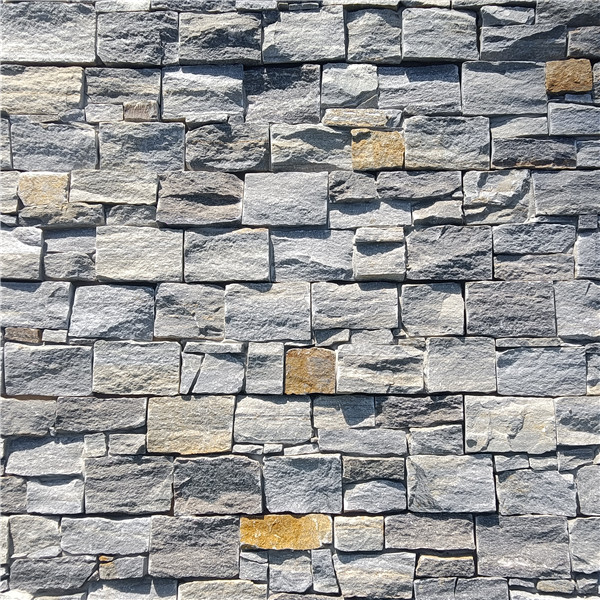Introduction
Limestone has long been a popular choice in construction due to its durability, versatility, and timeless aesthetic appeal. However, the environmental impact of traditional limestone quarrying and extraction has raised concerns about sustainability. In response to these challenges, the construction industry has been exploring alternative materials that offer similar benefits to limestone without the negative environmental consequences. One promising solution is cultured limestone, a synthetic material that mimics the look and feel of natural limestone while offering a more sustainable and eco-friendly option.
In this article, we will explore cultured limestone alternatives in depth, discussing their benefits, applications, and environmental impact. We will also highlight some of the most innovative and stylish options available on the market today, demonstrating how these materials can be used to create beautiful and sustainable structures.
What is Cultured Limestone?
Visit Your URL , also known as cast stone or synthetic limestone, is a man-made material that is designed to replicate the appearance and characteristics of natural limestone. It is typically made by mixing crushed limestone with a binder such as cement or resin, and then casting the mixture into molds to create a variety of shapes and sizes. The finished product closely resembles natural limestone in color, texture, and durability, making it an attractive alternative for construction projects where the use of traditional limestone may not be feasible or desirable.
Benefits of Cultured Limestone Alternatives
There are several key benefits to using cultured limestone alternatives in construction projects, including:
1. Sustainability: One of the primary advantages of cultured limestone alternatives is their reduced environmental impact compared to natural limestone. By using synthetic materials that do not require quarrying or extraction, construction projects can help preserve natural resources and minimize habitat destruction.
2. Consistency: Cultured limestone can be manufactured to precise specifications, ensuring a consistent quality and appearance across all pieces. This can be especially important for large-scale projects where uniformity is key.

3. Versatility: Cultured limestone alternatives are available in a wide range of colors, textures, and finishes, allowing for greater design flexibility and creativity. This versatility makes them suitable for a variety of architectural styles and applications.
4. Durability: Like natural limestone, cultured limestone alternatives are highly durable and weather-resistant, making them suitable for use in both interior and exterior applications. They are also resistant to mold, mildew, and other forms of deterioration.
5. Cost-Effectiveness: Cultured limestone alternatives are often more affordable than natural limestone, making them a cost-effective choice for budget-conscious construction projects. Additionally, their ease of installation can help reduce labor costs and construction time.
Applications of Cultured Limestone Alternatives
Cultured limestone alternatives can be used in a wide range of construction applications, including:
1. Exterior Cladding: Cultured limestone panels can be used to clad the exterior of buildings, providing a durable and attractive finish that mimics the look of natural limestone.
2. Architectural Elements: Cultured limestone can be used to create a variety of architectural elements such as columns, balustrades, and cornices, adding a touch of elegance and sophistication to any structure.
3. Fireplace Surrounds: Cultured limestone fireplace surrounds can create a striking focal point in any room, adding warmth and character to the space.
4. Flooring and Paving: Cultured limestone tiles and pavers can be used for indoor and outdoor flooring, walkways, and patios, offering a stylish and practical alternative to natural stone.
5. Sculptures and Artwork: Cultured limestone can be sculpted and shaped into intricate designs and artwork, allowing for unique and creative expressions of art and design.
Environmental Impact of Cultured Limestone Alternatives
While cultured limestone alternatives offer many environmental benefits compared to natural limestone, it is important to consider their overall impact on the environment. The production of synthetic materials such as cultured limestone can still generate greenhouse gas emissions and waste, so it is essential for manufacturers to prioritize sustainable practices and materials in their production processes.
To minimize the environmental impact of cultured limestone alternatives, manufacturers can take steps such as using recycled materials, sourcing materials locally to reduce transportation emissions, and implementing energy-efficient production methods. By choosing products from manufacturers that prioritize sustainability and transparency in their operations, construction projects can help reduce their carbon footprint and promote a more eco-friendly built environment.
Stylish Cultured Limestone Alternatives
In recent years, manufacturers have developed a wide range of stylish cultured limestone alternatives that offer unique colors, textures, and finishes to suit any design aesthetic. Some of the most popular options on the market today include:
1. Textured Cultured Limestone: Textured cultured limestone features a rough-hewn surface that mimics the natural texture of limestone, adding depth and character to any design.
2. Veined Cultured Limestone: Veined cultured limestone incorporates subtle veining patterns that closely resemble the natural veining found in limestone, creating a sophisticated and elegant look.
3. Antique Cultured Limestone: Antique cultured limestone is designed to replicate the weathered and aged appearance of natural limestone, giving a sense of history and charm to any space.
4. Colorful Cultured Limestone: Cultured limestone alternatives are available in a wide range of colors, from classic whites and beiges to bold blues and greens, allowing for endless design possibilities.
5. Custom Cultured Limestone: Manufacturers can create custom cultured limestone pieces to meet specific design requirements, allowing for unique and personalized applications in construction projects.
Conclusion
Cultured limestone alternatives offer a sustainable, versatile, and stylish option for construction projects seeking the beauty and durability of natural limestone without the environmental impact. By choosing synthetic materials that prioritize sustainability and quality, architects, designers, and builders can create stunning and eco-friendly structures that enhance the built environment for generations to come. With a wide range of colors, textures, and finishes available, cultured limestone alternatives provide endless design possibilities for both residential and commercial applications. As the construction industry continues to prioritize sustainability and innovation, cultured limestone alternatives are set to become an increasingly popular choice for environmentally conscious projects around the world.
